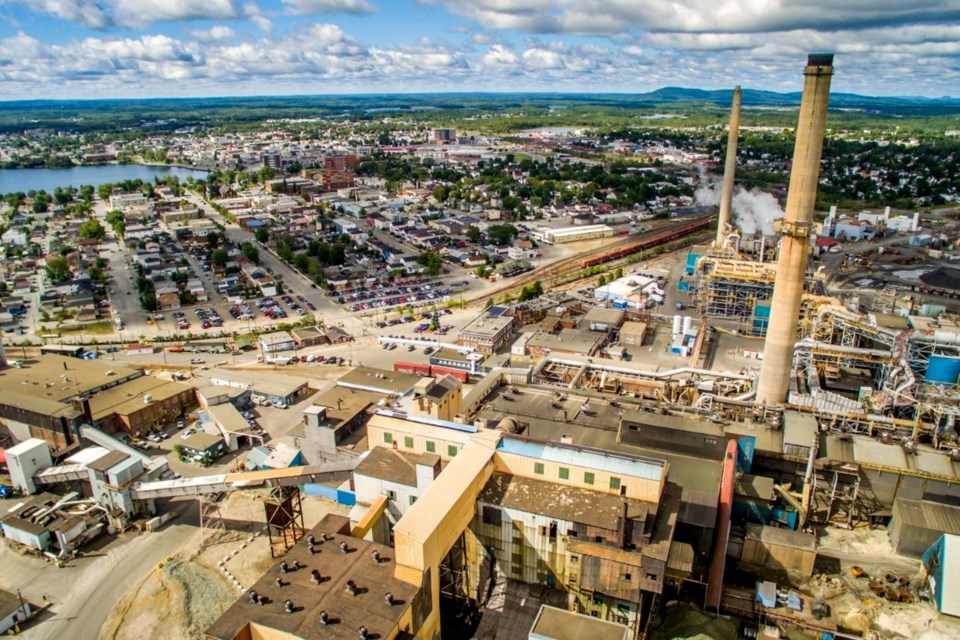Residents in a Northern Quebec mining city were recently told they should move out of their homes and into a new neighbourhood amid concerns that pollution from a nearby copper smelter was contaminating their properties and making people sick.
And while arsenic contamination from the Horne Smelter has become a significant health issue in Rouyn-Noranda, public health officials said it is very unlikely a similar issue could present itself in Sudbury, another mining city that has two copper smelters.
The Quebec government and the municipality of Rouyn-Noranda announced that roughly 200 families would be moved out of the city's Notre-Dame neighbourhood, and relocated away from the area of the Horne smelter.
The province is providing roughly $85 million to the city to pay for the new neighbourhood. Mining company Glencore Canada is expected to buy up the old polluted properties — about 80 buildings — clean up the arsenic contaminants in the soil and create a new green space buffer.
As part of the deal, Quebec is mandating that Glencore must limit arsenic emissions to 15 nanograms per cubic metre of material within the next five years, although the provincial threshold is three nanograms per cubic metre. News reports suggested Glencore had been allowed to spew out emissions with arsenic levels as high at 100 nanograms per cubic metre.
After the five-year period, Quebec said Glencore will need to adopt the provincial limit of emissions containing no more than three nanograms of arsenic. One nanogram of material is one-billionth of a gram.
While the three-nanogram limit is recognized as a formal limit in Quebec, there is also recognition that if Glencore was forced to meet that standard immediately, it could force the shutdown of the Rouyn smelter.
It’s a different story in Sudbury, the nearest mining and copper smelting city to Rouyn-Noranda.
Burgess Hawkins is a manager at Public Health Sudbury and Districts's (PHSD) Health Protection Division. He said despite the three-nanogram limit in Quebec, there is a much stricter standard in Ontario.
"In Ontario, we are well below the acceptable level here for arsenic," said Burgess.
"When I checked for Ontario, I was told by the Ministry of Environment that in Sudbury, the levels are well below the acceptable levels, like what the standard is for Ontario. Exactly what that number is for air quality, I'm not sure."
Hawkins said whenever there is an environmental emission that is above the threshold, Ontario's environment ministry takes the lead in terms of investigation and enforcement. He said the health unit is also on the response team to monitor and advise the public if an immediate health issue arises.
"However, we do comment on anything that the Ministry of Environment puts out, regarding changes to legislation, this sort of thing," Hawkins added.
"We are definitely involved. We work very closely with the Ministry of Environment on an assortment of subjects, including air quality."
Hawkins said that the key air pollution concern in Sudbury over the years has been the emission of SO2 (sulphur dioxide). He said the levels have been reduced significantly since the early 1970s.
The extent of the SO2 blight in Sudbury was outlined in 2021 in an essay by well-known Sudbury PhD Nadia Mykytczuk, as follows:
"For almost 100 years, Sudbury’s community and environment were blanketed in sulfur dioxide and metals released from the smelting of nickel ore. The sulfur acidified the soils, rain and lakes. The pollution triggered the complete loss of vegetation, leaving barren rolling hills of blackened rock. It was a devastated landscape.
"But 40 years ago, scientists, citizens, governments and mining companies in Sudbury set out with the goal that, no matter how damaged the environment was, it was worth trying to repair it. Since then, city- and industry-led programs have planted 12 million trees and revitalized over 3,400 hectares of land. People now swim and fish in the 330 lakes that fall within the city boundaries and were once highly acidic.
"Today, Sudbury has some of the cleanest air in all of Ontario. That’s hard to believe given the city once emitted 2.5 million tonnes of sulfur dioxide per year. In the 1980s, the ‘Sudbury’ became known as a unit of pollution, against which other industrial cities were measured. It’s now become known as a unit of restoration.
"Sudbury offers proof that it is possible to leave a healthier environment than the one we inherited, and proof that we can change our climate for the better." Mykytczuk wrote.
Glencore and Vale are the two major nickel and copper mining companies in Sudbury that have smelters and refineries. Both companies are active in monitoring smelter emissions. In a document published by Glencore, the Annual Environmental Monitoring Team meeting for 2022, the company states it has real time monitoring of SO2 (sulphur dioxide) and other industrial emissions.
A similar report published by Vale revealed that there are no less than 18 monitoring stations funded by Vale and INO (Integrated Nickel Operations, Glencore).
The monitoring stations are operated by FROSKR, a division of BESTECH Canada.
Ontario's Ministry of the Environment, Conservation and Parks maintains an online air quality monitoring page where users can enter the name of the city, enter the date, enter the contaminant and get a fresh display showing the level of pollution in the local air.
Len Gilliss covers health care and mining for Sudbury.com.
